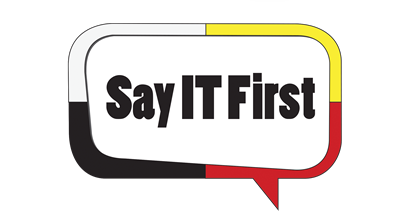I once was having a conversation with an official in the Federal Government who was advising me how to apply for grants to preserve the endangered languages. His words were, "Please do not tell me you want to video tape Elders so people can learn from those videos." I was going to go there, but his words caused a redirection in my line of questioning.
"Why would you say that?" I queried.
He said that we have countless hours of videos already, but nobody can use them. It is just a whole library of people speaking languages nobody understands. They are great for archival purposes but lousy for revitalisation efforts. The videos are non-indexed, not transcribed nor translated. In a lot of cases, the curators of the video library do not even know what language the recordings are in. The documentation is so poor, the people who put these recordings together were, in retrospect, wasting time. Good recordings but little functionality or applicability. This government person told me to hold my hand out and hold all of my fingers up. Now hide two fingers, he said. He said the Government is interested in funding projects that replace those two fingers with three, each finger representing a Native Language speaker.
I was listening to an Anishinaabe speaker named Antoine Treuer a number of years ago. Something he said has always stayed with me. He said as long as English subtitles were present, nobody would ever have the discipline to learn the language. Learning can only be achieved if the document being read was in the Native Language or the video being viewed was pure Ojibwe. One would assume by looking at my books that I didn't agree with Antoine, however, I would argue the perfect books would have no English in them. I did a market study and found that the books would not be used unless parents and teachers had the context of what the book was saying. I wholeheartedly agree with Mr. Treuer and have accepted his challenge as a concept to embrace in everything I help to create. As well, if one adheres to the philosophy that the languages should only be transferred orally, then books are not going to satisfy this audience anyway. Be it said, that one could argue reading the book aloud to a child is an oral transfer anyway, but we'll save this discussion for another time.
Back to Indigitization. The Children’s Shows we produce with Corporate Films Canada are filmed, created and viewed 100% in Native Languages. In the DVDs, we provide the English transcripts, but one needs to search for these within the disks and they are provided only for reference and context so non-speakers can relate the ideas of the show itself. These Native Language shows are effective because we have chosen an audience aged between 2 and 5 years old. At this age, children are sponges for language acquisition. One source I cite says children at this age learn about 3 to 5,000 words, hence our focus on children. We do not realize when a child is watching an English TV show, they are still learning words, sounds and sentence structures particular to the language being played. I always reflect back to Antoine Treuer every time I get surveys back saying we should have subtitles. Think about it, the request is because the people want to understand what is being said, not to learn the language. I've yet to have a child ask for them.
So there we have it, a bunch of preamble but let's get back to some of the benefits of Indigitization. We're currently Indigitizing some Native Languages into a translation tool so daycare workers can produce their own lessons and material. We are customizing the interface of the display, based on daycare workers requests, so the work we produce will get used. If a teacher in Japan wants to teach Ojibwe verb conjugation, they now have the capability because the Internet has provided access independent of location and free from proximity to speakers. The Children’s shows are only using Native Language with no English whatsoever. The children are exposed to the language in an immersion setting where the parent, teacher or daycare worker needs no prior knowledge of the language. Optimally, of course, a Native Language speaker can augment the experience more effectively and authentically. In the absence of a Native Speaker, through Indigitization, the sounds, sentence structure and vocabulary can still be transferred to the child because it is indexed in a retrievable manner.
The people I work with on these projects are amazing. To a person, they want to make a difference but they didn't know they had the ability to have impact on a much broader scale. Their work has immortality, in a way, because once published on the Internet, Indigitized content is almost impossible to remove. The advent of the Internet provides access anywhere, anytime. Indexing the material in a consumable way through Indigitization creates a permanent lesson for use, even if language knowledge disappears in a certain geographical area. Clearly, this is not to replace real life lessons, nor is Indigitization used to replace things like Elders' teachings or learning from the land, for example. But it is better than raising your kids to speak and act like me.
Mike Parkhill Founder,
SayITFirst
www.sayitfirst.ca

